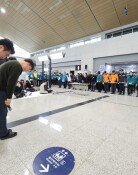Lax management of driver’s license leads to tragedy
Lax management of driver’s license leads to tragedy
Posted January. 03, 2025 07:53,
Updated January. 03, 2025 07:53
A 75-year-old driver who drove into a crowd at the Mokdong Kkabi Market in Seoul, resulting in thirteen casualties, was revealed to have been diagnosed with dementia. The driver had been advised to seek treatment by a public health center in February 2022 after showing signs of dementia and was officially diagnosed with dementia at a hospital in November 2023. Reports indicate that the driver stopped taking medication for approximately ten months before the accident.
The fact that an elderly driver diagnosed with dementia three years ago could still drive without treatment highlights a poorly managed licensing system. After being advised to seek treatment, the driver passed a physical aptitude test for license renewal in September 2022, making him legally eligible to drive until September 2027. Under current law, individuals must be officially diagnosed with dementia at a hospital for relevant agencies to be automatically notified, making them subject to physical aptitude tests. Since there is no time limit for notification, it could take years before such tests are conducted. Moreover, if drivers pass the test with a medical opinion, they are still allowed to drive, and authorities have no way of knowing if they stop treatment afterward.
As of now, there are 4.75 million drivers aged sixty-five or older, and the dementia incidence rate for this age group is 11 percent. This means there could be 400,000 to 500,000 drivers with dementia still on the road. There is an urgent need to notify relevant agencies immediately upon diagnosis of dementia, require swift physical aptitude testing, and expand cognitive screening for dementia to include drivers aged sixty-five or older instead of the current seventy-five. Since restricting elderly drivers could lead to health deterioration, regulatory reforms should aim to ensure safe mobility by mandating safety devices in vehicles used by elderly drivers and increasing alternative transportation options in vulnerable areas.







